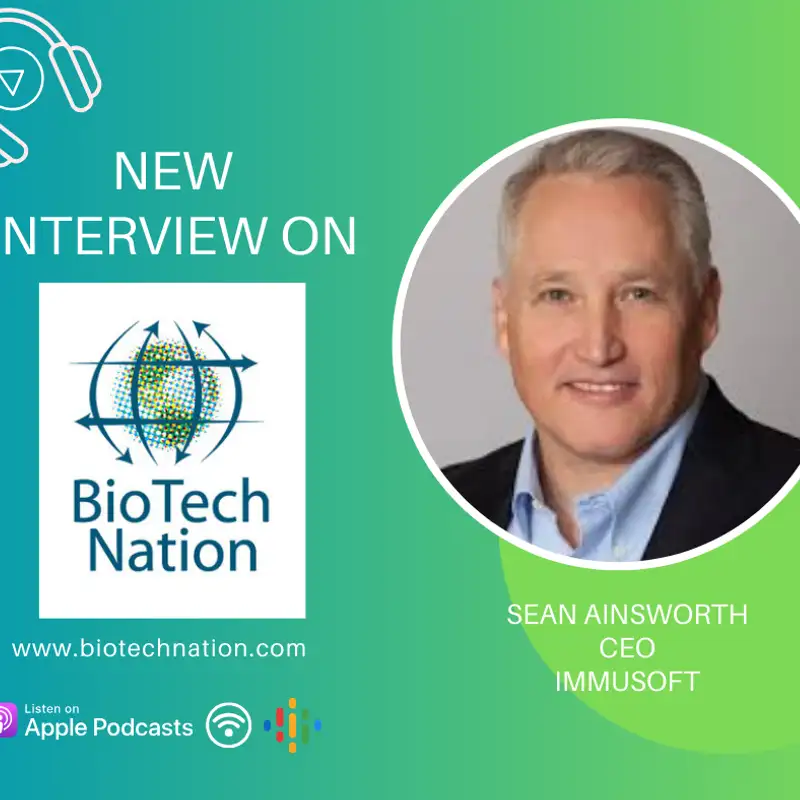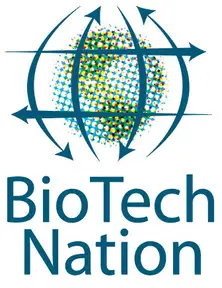Beyond Pills and Shots... Sean Ainsworth, CEO, Immusoft
When you take your medicine, how you have to take your prescribed drugs can be hugely important. Is it a simple pill, an injection, a nasal spray, and very time consuming, is it an infusion where you sit for several hours with the vital therapeutic you need being minutely introduced into your bloodstream every few weeks? Certainly any effort to develop new ways to deliver drugs is important, and it is even more important when you have a chronic condition where you must have an essential medicine every day for the rest of your life. Both a new way to deliver therapeutics and the creation of the new therapeutics themselves is exactly what ImmuSoft of Seattle is working on. Sean Ainsworth is its CEO.
Dr. Moira Gunn:Sean, welcome to the program.
Sean Ainsworth:Thanks so much, Moira. Thanks for having me on.
Dr. Moira Gunn:We're all used to taking pills and injections and even infusions into our bloodstreams, and they all have their advantages and disadvantages. But who isn't open to finding better ways to deliver drugs? And today, we're talking about a new way to deliver drugs, and that's by modifying something that occurs naturally in our bodies. They're called B cells. What are B cells?
Sean Ainsworth:B cells are immune cells that are responsible for producing antibodies. Antibodies against, we can think of vaccines or viruses. And so that's what gives us long lasting immunity these different pathogens. And we're taking these B cells and we're adding the genes that encode for proteins. And a lot of drugs are really just proteins and so these are therapeutic proteins that the B cells then produce so when we give them back to the patient, they're naturally producing and releasing those therapeutic proteins into the bloodstream.
Dr. Moira Gunn:Now obviously a lot of people take drugs all the time. Does that mean all our B cells are interchangeable?
Sean Ainsworth:So they're going to be patient specific. In other words, I can't take B cells from myself and give them to somebody else or vice versa. But we can indeed take a patient's B cells, program those outside the body, and once they're producing those therapeutic proteins, them back to that very same patient.
Dr. Moira Gunn:Now importantly, while your specific B cells are needed, ImmuSoft has been working on a general way to modify B cells to make specific proteins. And before we get there, the first medical treatment you've been working on is Hurler syndrome. Tell us about that.
Sean Ainsworth:So Hurler syndrome is caused by a defective gene called IDUA. And when IDUA isn't working properly, it leads to things like stiffness in your joints amongst many other profound implications that follow these patients really from birth and through to their entire lives if not properly treated. So when these patients are affected by that defective gene, it really causes a lot of issues from joint stiffness that's quite severe, that affects their ability to walk. It also impacts their cognitive function as well as their heart, their liver, their spleen. It's really quite profound, the impact on these individuals, and it starts in childhood and follows them through their entire life.
Dr. Moira Gunn:So for this treatment that ImmuSoft is developing, you took B cells from a particular first candidate human here, and you took them out and you made a modification, to the B cell and you gave it back to the human. What was the modification?
Sean Ainsworth:The modification was the addition of that fully functioning IDUA gene.
Dr. Moira Gunn:And that's it?
Sean Ainsworth:That's it, yeah.
Dr. Moira Gunn:You've just given them the gene, the ability to produce the gene from those B cells.
Sean Ainsworth:Correct, correct. So at the cellular level, that's the big modification. Once we give those cells back to the patient, they migrate to the bone marrow and they begin producing that therapeutic protein in mass quantities and potentially for many, many years. And so I believe you can imagine that 20 receiving that therapeutic protein will have a pretty dramatic impact on the patient's lives.
Dr. Moira Gunn:So you're going slowly here as you must when you make such a change to a human body. And I know you've started in adults. In fact, you started in just one adult over a year ago and are about to start your second adult, being very careful here. What's been the experience with this first adult with Hurler syndrome?
Sean Ainsworth:So his experience has been quite dramatic. And so we've seen improvements in his ability to walk. And to put some numbers around it, we do what is called a six minute walk test. And over the course of six minutes, he had a roughly two sixty yard improvement, which is quite extraordinary. Typically seeing somewhere in the 30 plus minus range is very impactful for these patients.
Sean Ainsworth:He has also, reported being able to do things like sit with his legs crossed, he can reach his back now, which he previously couldn't do, he can better straighten his fingers. And so these might not sound terribly dramatic, but you can imagine if you've got a buildup of materials in your joints that's affecting your ability to move freely, really does cause pain and to remove some of that material and improve the flexibility, improve the pain profile, it's quite impactful for these patients.
Dr. Moira Gunn:Now, it's very exciting to think, boy, that gene is in there producing proteins that actually will they will remove these, which they do every day in most people. And now they're removing even old ones, which is very exciting to think about. But there's also the you get a little excited when you say, Can you stop the cells from producing these therapeutic proteins?
Sean Ainsworth:We do believe that we can go in and remove the cells if we had to. So thankfully we haven't yet, but there are drugs that are targeted towards B cells, which is actually another pretty unique aspect of what we do. So other modalities are not quite so easy to reverse, but we think that we've got that opportunity with our approach.
Dr. Moira Gunn:And I know you're continuing with the hurler syndrome and being careful with working with the FDA here to make sure that we don't get ahead of ourselves. But as I said earlier, ImmuSoft has created a general way to modify B cells. What else might you use this same B cell modifying technology for?
Sean Ainsworth:So we're hopeful that we can use it across a broad number of different protein types. And at the outset I mentioned that B cells naturally produce antibodies. And so those comprise a pretty broad swath of different therapeutics that are already in existence. So if we think about, for example, Humira and SKYRIZI, those are both very broadly used in the autoimmune space and it could potentially be delivered from B cells. And then we can also think of, for example, the GLP-one approaches, which are Ozempic, Wegovy, those are also essentially therapeutic proteins which we can deliver from B cells.
Sean Ainsworth:So there's really a broad number of different areas we could pursue with, with this B cell approach.
Dr. Moira Gunn:So in some ways, like what you're working on now with hurlers, you are talking about inserting genes that would modify a mutated, you know, problematic gene in someone's body. And in in other ways, you would actually be using it to put genes in that would create brand new drugs that literally have a therapeutic effect.
Sean Ainsworth:Indeed. Indeed, yes. And that's the beauty of these gene therapeutic approaches. They did start typically with attempting to correct for defective genes, but as the field has grown, the opportunity to add therapeutic proteins that don't already exist, so we can think of them as kind of synthetic approaches, those are also opened up to approaches like ours with the B cell.
Dr. Moira Gunn:Well, you're going one at a time slowly with your first hurler patients here. Is it gonna be another year for the second one? I mean, can we see some faster progress perhaps?
Sean Ainsworth:I believe so indeed, yes. So we're planning to dose that second patient imminently. We are actually planning to re dose our first patient as well, which is super exciting. That's something that is not being done with a lot of advanced therapeutics like this. And from here indeed, we expect the cadence will pick up potentially dosing several patients this year.
Dr. Moira Gunn:Now, this opens up the question of, can you tell how well these B cells are working?
Sean Ainsworth:We can. So we can measure, aside from things like a six minute walk test and flexibility, we can look at, we call them molecular markers, and so we can detect those in the blood and demonstrate that the bad stuff is going down. We can do that in the blood, in the urine, and even the brain, cerebrospinal fluid.
Dr. Moira Gunn:We have to understand dosing is always the issue. You know? Is it too much? Is it too little? Is it you know?
Dr. Moira Gunn:What's really going on? How are you monitoring people, and how are you able to see that this actually works other than the fact that people are able to walk better and and, you know, move their arms better and straighten their fingers?
Sean Ainsworth:So we can actually measure those long chain sugars. We can pick them up in the urine, in the blood, as well as other locales. We see that those do get reduced over time, as we expect, and that's really what's driving these potential benefits in the patients.
Dr. Moira Gunn:Well, Sean, thank you so much. I hope you come back. Keep us updated.
Sean Ainsworth:All right. Well, you, Moira. It's been a pleasure. And again, I really appreciate the opportunity to speak to you here.
Dr. Moira Gunn:Sean Ainsworth is the CEO of ImmuSoft. More information is available on the web at ImmuSoft.com. That's immu,Immu, imu soft Com.

